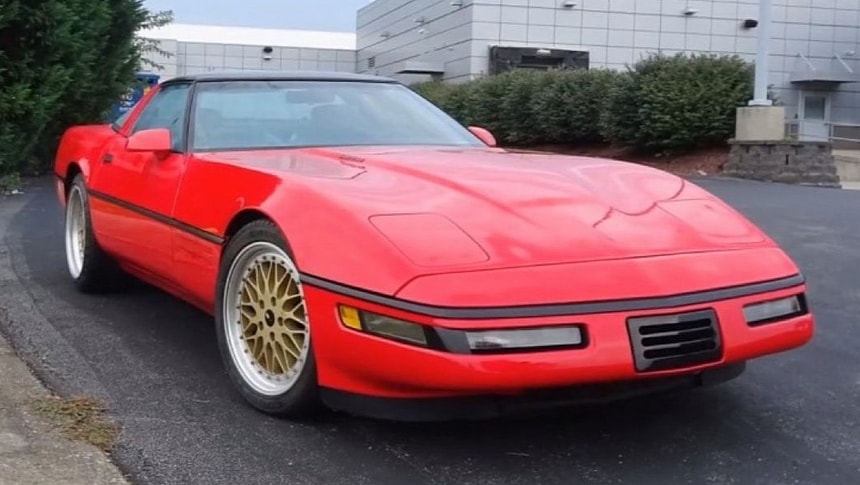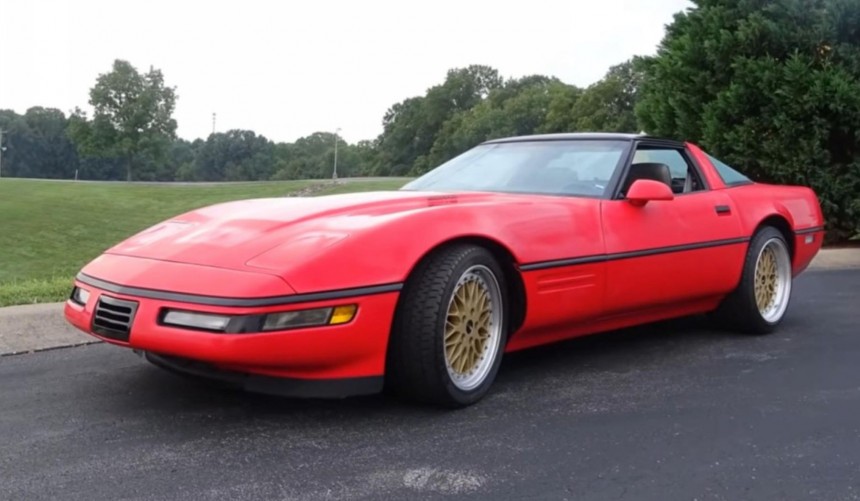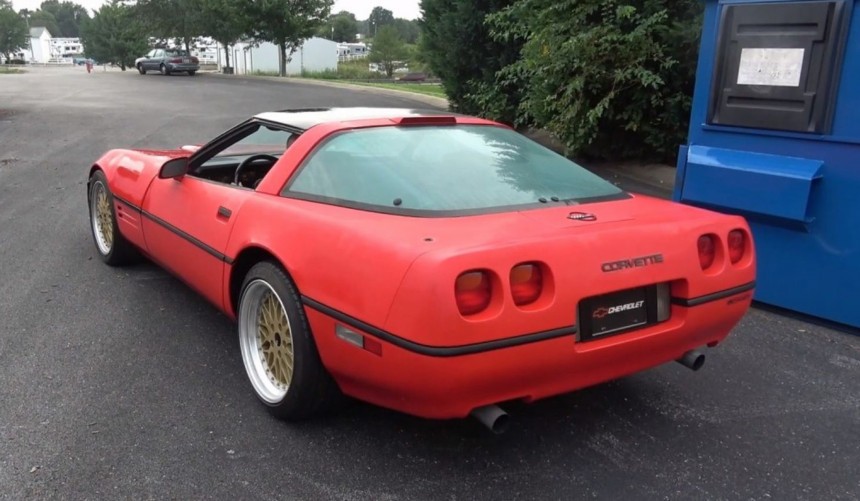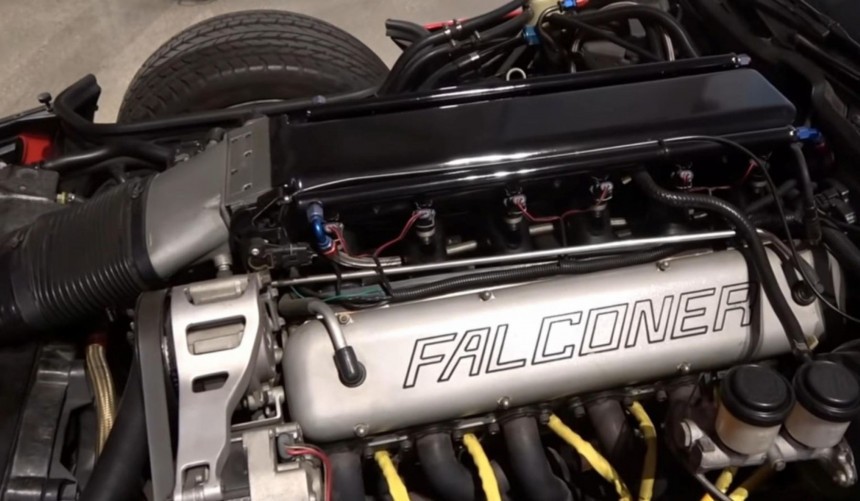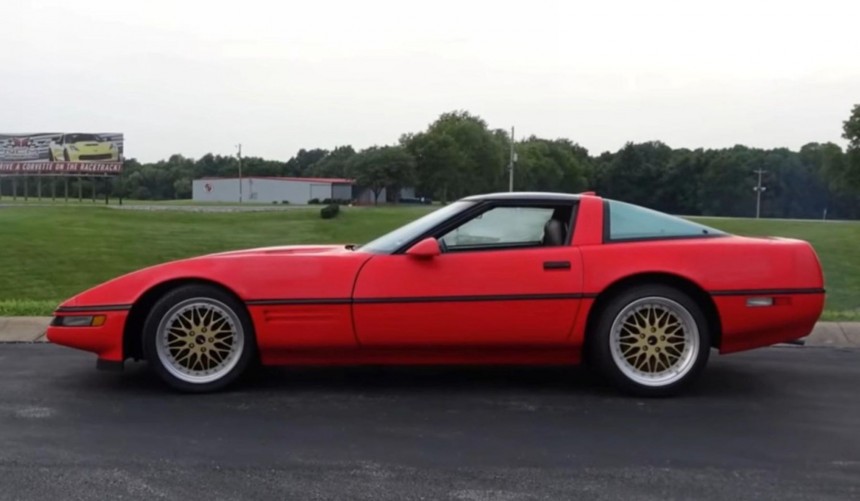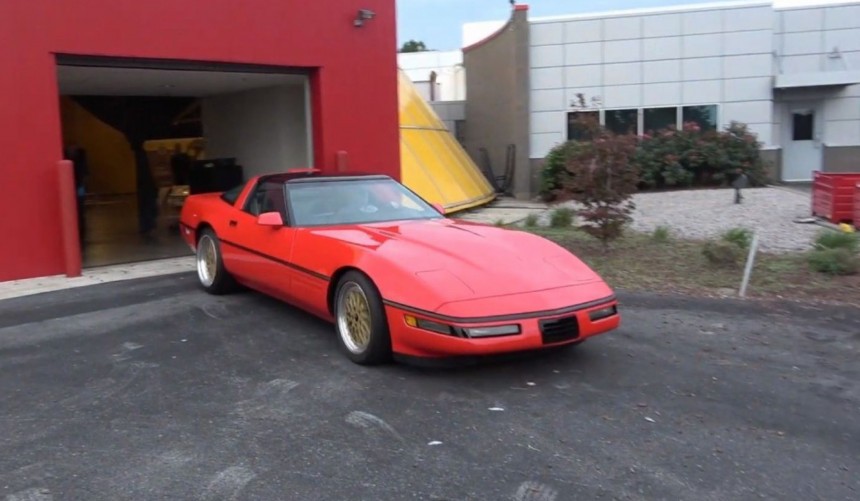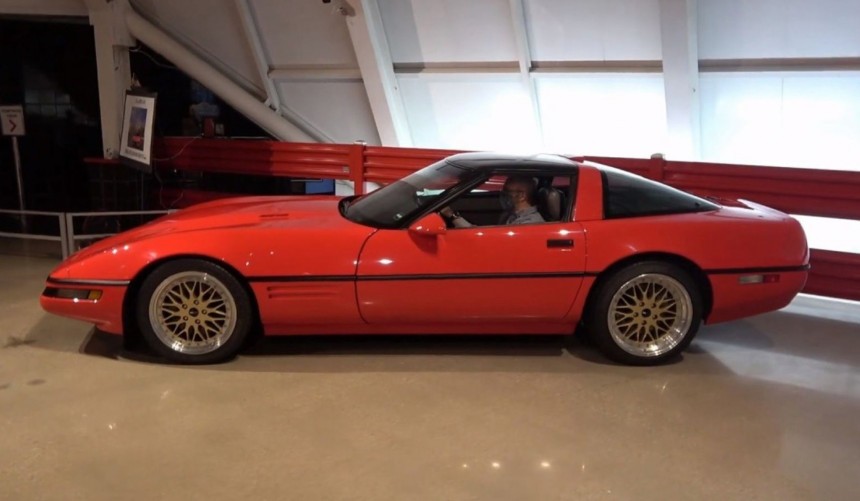After getting wind that crosstown rival Chrysler was developing a V10-powered sports car, Chevy responded with an experimental Corvette that could've made the Viper look like a threadsnake.
After the exciting era of muscle car madness was cut short during the early 1970s by rising insurance rates, draconic federal emission restrictions, and, finally, an industry-shattering fuel crisis, US carmakers shifted their focus away from factory-built, street-legal performance vehicles.
Though performance-oriented cars didn't disappear entirely, they were nowhere near as powerful nor as many as they used to be during the glory days of muscle.
Fortunately, by the early 1990s, enthusiasts were giving multiple reasons to be optimistic as Detroit began to steadily resurrect genuine American performance models.
In 1990, Chevrolet introduced the ZR-1 version of the C4 Corvette. Powered by a Lotus-engineered V8 that made 375 hp (and later, 405 hp), it propelled America's sports car to supercar status.
But while the King of the Hill was an impressive sports car, the Chrysler Corporation's Dodge division was working with Lamborghini and Carroll Shelby (among others) to develop a venomous, V10-powered predator that aimed to feast on the ZR-1.
By 1991, Chevy's worst nightmare became a reality when the game-changing Dodge debuted as a pace car at the Indy 500 with Carroll Shelby behind the wheel.
Officially dubbed Viper, the 400-hp, V10-powered two-seater promised to deliver a lethal bite that could seriously threaten the image of the ZR-1.
Some members of the Corvette development team felt they had to act, so they decided to develop a V12-powered antidote.
Chevrolet didn't lack the talent or the motivation to create a Viper-taming Corvette, but since the division had already spent a hefty amount to develop the ZR-1 and barely secured the budget to improve it, the engineers had to be creative.
Determined to build an even more outrageous Corvette, they convinced management to divert a fraction of the budget for durability testing of the ZR-1's bespoke, German-designed ZF six-speed manual transmission.
Since the ZR-1's LT5 V8 was scheduled to get a performance boost, the engineering team wanted to see just how much power the ZF unit could handle.
The decision-makers bit the bate, and instead of testing the gearbox with a tuned LT5, the engineering team hooked it to a V12, creating the Viper-killing Corvette they covertly aimed to deliver in the first place.
The next problem that the small "skunkworks" team faced was the lack of a V12. Chevy didn't have a V12 lying around somewhere in an experimental engine storage facility, so they borrowed one from famed builders Ryan Falconer Racing Engines.
Called Falconer V12, the all-aluminum powerhouse recently introduced by the Arizona-based engine builders was initially designed for marine and aviation use, but the company was kind enough to modify one for Chevy's new project.
The result was a 9.8-liter rated at 686 hp and 680 lb-ft (922 Nm) of torque, which, impressively enough, was less than 100 pounds (45 kg) heavier than the ZR-1's 5.7-liter V8.
While the Falconer V12 didn't add too much weight to the stock ZR-1 chosen for the project, it did add size - so much so that it didn't fit underneath the clamshell hood.
This major issue was solved with the help of Michigan-based SportsFab, a small company that took on the task of modifying the ZR-1.
Though unnoticeable to the untrained eye, the modifications were extensive. The SportsFab crew had to stretch the entire front end by eight inches (203 mm), which meant re-working the subframe and designing a new hood.
By 1992, the experimental V12-powered 'Vette was completed and christened ZR-12.
Initially, it was equipped with a couple of side-exiting, muffler-less exhaust pipes that made it extremely loud, but several months later, the team developed a more conventional, rear-exiting exhaust system complete with adequate mufflers.
More powerful than most supercars available at the time, the ZR-12 was used for several promotional events, but while its V12 engine wowed the crowd, the mostly stock cooling system disappointed them.
Faced with overheating issues, the ZR-12 was unable to run for more than a few minutes at a time and, consequently, its performance potential couldn't be tested.
The overheating issue was eventually patched up, but, despite the development team's plea, management decided to pull the plug on the project.
The ZR-12 could've become a veritable Viper killer and one of the most impressive supercars ever built, but a mass production run would've required a Chevy V12, and the division simply didn't have the time or the budget to develop one.
Instead, the ZR-1 received a performance boost to 405 hp in 1993, and while it wasn't as spectacular as the Falconer V12, the improved LT5 helped make the high-performance Corvette one of the most impressive production sports cars of the early 1990s.
Unlike other experimental prototypes that met the crusher after serving their purpose, the ZR-12 was retired to the GM Heritage Collection.
This impressive yet forgotten beast can be admired at the National Corvette Museum in Bowling Green, KY, where it currently resides on loan from GM.
Though it never made it into production and wasn't as highly publicized as other experimental Chevys, the ZR-12 remains one of the most outrageously good prototypes to ever don Corvette badges.
You can see (and hear) the ZR-12 roaming the streets near its current home in the YouTube video below by DtRockstar1
Though performance-oriented cars didn't disappear entirely, they were nowhere near as powerful nor as many as they used to be during the glory days of muscle.
Fortunately, by the early 1990s, enthusiasts were giving multiple reasons to be optimistic as Detroit began to steadily resurrect genuine American performance models.
In 1990, Chevrolet introduced the ZR-1 version of the C4 Corvette. Powered by a Lotus-engineered V8 that made 375 hp (and later, 405 hp), it propelled America's sports car to supercar status.
But while the King of the Hill was an impressive sports car, the Chrysler Corporation's Dodge division was working with Lamborghini and Carroll Shelby (among others) to develop a venomous, V10-powered predator that aimed to feast on the ZR-1.
An antidote for the Viper's lethal bite
Officially dubbed Viper, the 400-hp, V10-powered two-seater promised to deliver a lethal bite that could seriously threaten the image of the ZR-1.
Some members of the Corvette development team felt they had to act, so they decided to develop a V12-powered antidote.
Officially created to test the ZR-1's gearbox
Determined to build an even more outrageous Corvette, they convinced management to divert a fraction of the budget for durability testing of the ZR-1's bespoke, German-designed ZF six-speed manual transmission.
Since the ZR-1's LT5 V8 was scheduled to get a performance boost, the engineering team wanted to see just how much power the ZF unit could handle.
The decision-makers bit the bate, and instead of testing the gearbox with a tuned LT5, the engineering team hooked it to a V12, creating the Viper-killing Corvette they covertly aimed to deliver in the first place.
Powered by a race-bred V12 initially developed for boats and planes
Called Falconer V12, the all-aluminum powerhouse recently introduced by the Arizona-based engine builders was initially designed for marine and aviation use, but the company was kind enough to modify one for Chevy's new project.
The result was a 9.8-liter rated at 686 hp and 680 lb-ft (922 Nm) of torque, which, impressively enough, was less than 100 pounds (45 kg) heavier than the ZR-1's 5.7-liter V8.
Extensively modified to accept the new engine
This major issue was solved with the help of Michigan-based SportsFab, a small company that took on the task of modifying the ZR-1.
Though unnoticeable to the untrained eye, the modifications were extensive. The SportsFab crew had to stretch the entire front end by eight inches (203 mm), which meant re-working the subframe and designing a new hood.
Insanely powerful but never properly put to the test
Initially, it was equipped with a couple of side-exiting, muffler-less exhaust pipes that made it extremely loud, but several months later, the team developed a more conventional, rear-exiting exhaust system complete with adequate mufflers.
More powerful than most supercars available at the time, the ZR-12 was used for several promotional events, but while its V12 engine wowed the crowd, the mostly stock cooling system disappointed them.
Faced with overheating issues, the ZR-12 was unable to run for more than a few minutes at a time and, consequently, its performance potential couldn't be tested.
It didn't go into production, but it's still around today
The ZR-12 could've become a veritable Viper killer and one of the most impressive supercars ever built, but a mass production run would've required a Chevy V12, and the division simply didn't have the time or the budget to develop one.
Instead, the ZR-1 received a performance boost to 405 hp in 1993, and while it wasn't as spectacular as the Falconer V12, the improved LT5 helped make the high-performance Corvette one of the most impressive production sports cars of the early 1990s.
Unlike other experimental prototypes that met the crusher after serving their purpose, the ZR-12 was retired to the GM Heritage Collection.
This impressive yet forgotten beast can be admired at the National Corvette Museum in Bowling Green, KY, where it currently resides on loan from GM.
Though it never made it into production and wasn't as highly publicized as other experimental Chevys, the ZR-12 remains one of the most outrageously good prototypes to ever don Corvette badges.
You can see (and hear) the ZR-12 roaming the streets near its current home in the YouTube video below by DtRockstar1
